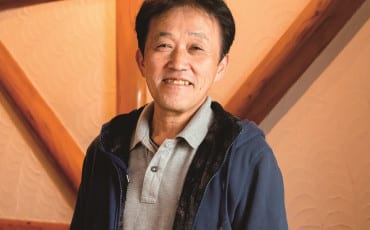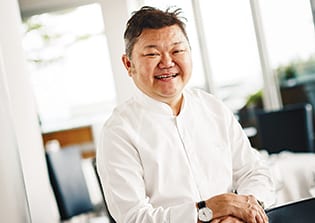- OISHII
- Articles
- Art & Culture
- A Kamaboko Reinvention
Articles
Art & Culture
Jul 25, 2017
A Kamaboko Reinvention
The Kawachiya Company has transformed a Japanese staple into stunning works of art that keep up with the times.
Kamaboko, otherwise known as fishcake, is made from finely blended fish meat. It is then shaped into a loaf and steamed until firm and springy. This Japanese staple comes in numerous forms throughout the region. In Northern Japan, cylindrical kamaboko grilled on a stick is called chikuwa. And in Southwestern Japan, fishcake is traditionally deep-fried and called satsuma-age.
Premium Craftsmanship
Established in 1947, Kawachiya opened its first store in the Toyama Prefecture selling premium kamoboko. Ranging from understated to extravagant, these delicacies are usually presented as souvenirs and gifts. Undeterred by changing consumer habits, the company also prides itself with an ability to innovate while staying true to the traditional craft of kamaboko-making.
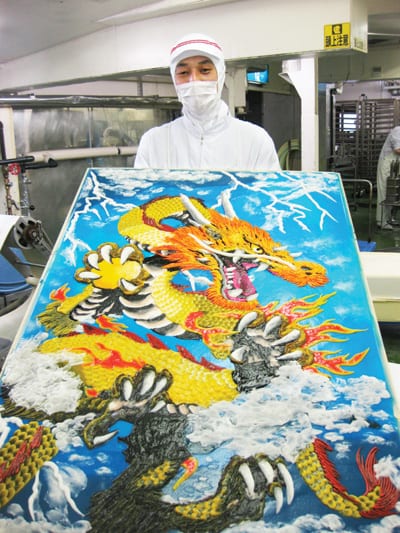
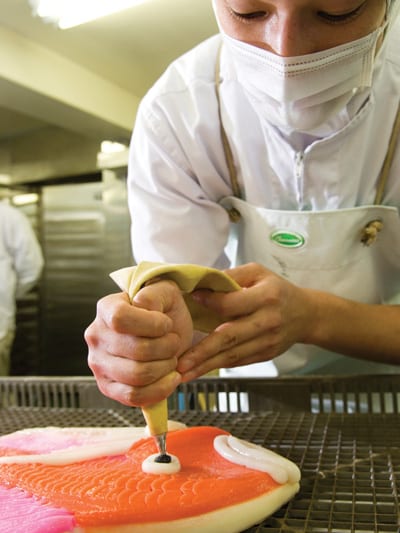
A Wedding Affair
One of the traditional masterpieces that Kawachiya makes is red snapper-shaped kamabokos in various sizes. According to second-generation CEO of the company, Mr. Hajime Kawauchi, newlyweds traditionally presented these fish as gifts to their wedding guests. “After the banquet, guests would cut their kamaboko gifts at home to distribute among neighbours as a symbol of happiness,” he shares.
However, behind each of these vibrant showstoppers lies a series of laborious sculpting. “The craftsmen meticulously form the fish’s relief using piping bags and sculpting knifes to create lifelike details,” he says. These days, to cope with modern preferences and a decline in wedding kamaboko, the company produces sleeker, smaller fishcakes as wedding gifts in tandem with its traditional offerings.
Paint It Pretty
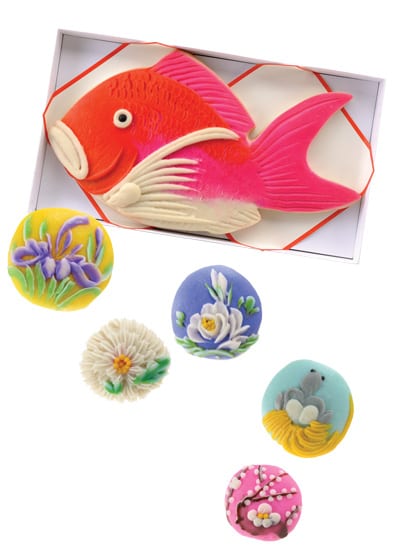 Each year, a nationwide competition is held for the grandest craft kamaboko, where kamaboko sheets are transformed into glorious works of art. And unsurprisingly, Team Kawachiya frequently comes out tops. “Sometimes, it takes up to five craftsmen and one month to complete a single masterpiece,” Mr. Kawauchi adds.
Each year, a nationwide competition is held for the grandest craft kamaboko, where kamaboko sheets are transformed into glorious works of art. And unsurprisingly, Team Kawachiya frequently comes out tops. “Sometimes, it takes up to five craftsmen and one month to complete a single masterpiece,” Mr. Kawauchi adds.
Usually, natural dyes from orange, green tea, and pumpkin are used in colouring kamaboko. But for this occasion, artificial colouring is used for a wider range of saturated hues, depicting anything from Japanese landscapes to mythological folklores.
Simplicity In Sushi
Not only does Kawachiya excel in flamboyantly designed kamaboko, it also shines in its understated elegance of sushi kamaboko too. Don’t be fooled by its appearance – this is not your usual rice-and-sashimi combination. “My father thought about innovating kamaboko and noticed how everybody in Japan loved sushi, so he replaced the rice portion of sushi with a slice of kamaboko,” shares Mr. Kawuchi.
The idea hit off with such rousing success that at one point, there were over a thousand variations. Today, the company streamlines this to just nine of its best selling varieties to the likes of unagi, shrimp, and salmon.
Despite a decline in homegrown crafts, Kawachiya preserves this Japanese treasure of traditional kamaboko-making that’s every bit the darling of the Toyama Prefecture, Japan and beyond.
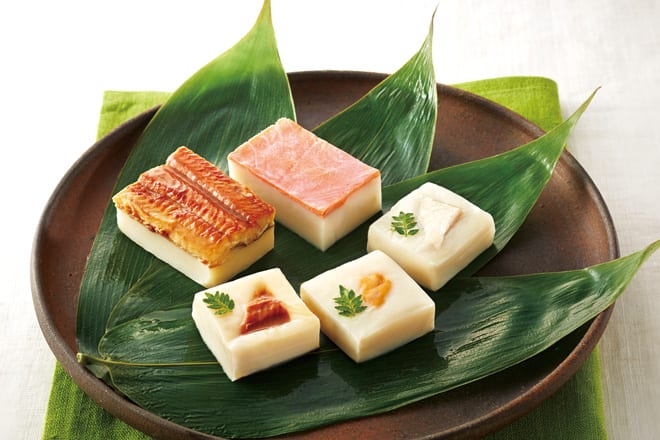
(TEXT Matthew Fam)





